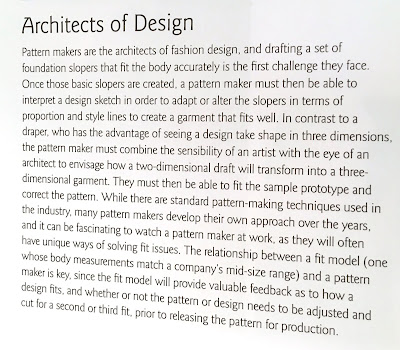https://youtu.be/mkA4cX9vdx4
I am pretty sure this was the OH YASS, fist-pump moment.
I give Seamwork/Collette Patterns endless crap, but this is a great video. It's clear (they used two very different fabrics to illustrate) and concise. You do this in two passes, one for each armhole.
Bring your own popcorn.
And then I kept watching their channel.
We have a less than clear video on bias layouts
I can stop you right here and say: hey, go read this post next week:
(the one that isn't there yet but it will be)
https://erniekdesigns.blogspot.com/2019/07/bias-theory-would-look-better-with.html
However, let's say hello to the instigator of the next several blog posts
The problem starts here:
https://youtu.be/cjqqxM0H0iA?t=199
Each fabric has two biases.
She does not explain this.
But it's true. If you don't match the seams properly, the item will twist as it hangs out/gets worn
It's important to get this right when you're laying out your pattern pieces.
And we are finally going to get to that next week.
I've been working on that post for about a year.
On the other hand, if you are up for a different approach to the subject,
Paukshte Fashion Workshop is worth a look.
And then I kept watching their channel.
We have a less than clear video on bias layouts
I can stop you right here and say: hey, go read this post next week:
(the one that isn't there yet but it will be)
https://erniekdesigns.blogspot.com/2019/07/bias-theory-would-look-better-with.html
The problem starts here:
https://youtu.be/cjqqxM0H0iA?t=199
Each fabric has two biases.
She does not explain this.
But it's true. If you don't match the seams properly, the item will twist as it hangs out/gets worn
this is wrong
this is also wrong
It's important to get this right when you're laying out your pattern pieces.
And we are finally going to get to that next week.
I've been working on that post for about a year.
On the other hand, if you are up for a different approach to the subject,
Paukshte Fashion Workshop is worth a look.
https://youtu.be/MuTCjRyDHpQ
I have to admit that I love this woman's slash pattern altering, as well as how she cuts out the pattern piece by folding the fabric. It's probably distorted, she didn't line up the selvage and the cut edge evenly, she's using that fabric so inefficiently, but DAMN she just gets to it. She eyeballs it and goes for it.
But the thing is: because it's on the bias, those little squiggles and snips will hang right out. It's an amazingly forgiving construction.
If it only stayed still.
And then I remembered I was going to watch the Charles Kleibacker videos.
But let's go to the tape with Charles Kleibacker
The next several blog posts continue this thinking.
Stay tuned.




















































